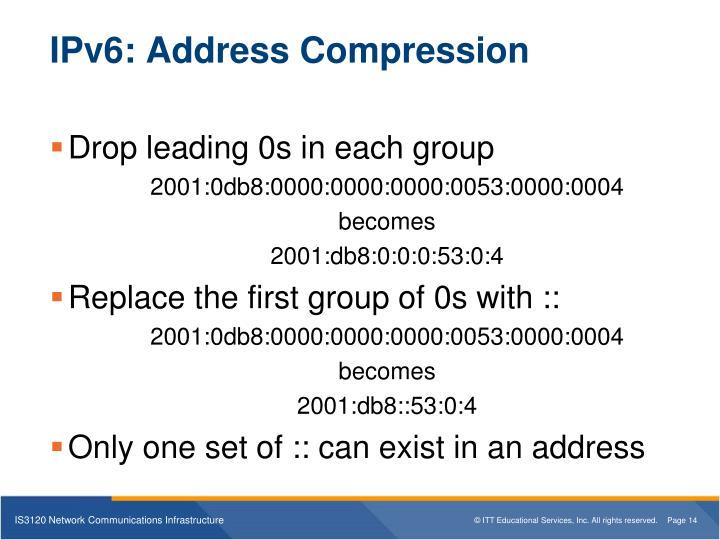
Though IPv4 has few bits reserved for Type of Service or Quality of Service, but they do not provide much functionality.

Data has to be encrypted with some other security application before being sent on Internet.ĭata prioritization in IPv4 is not up to date. IPv4 on its own does not provide any security feature which is vulnerable as data on Internet, which is a public domain, is never safe. one part which belongs to intranet, primarily uses private IP addresses which has to go through number of mechanism to reach the other part, the Internet, which is on public IP addresses. Using features such as NAT, has made the Internet discontiguous i.e. There is a requirement of protocol which can satisfy the need of future Internet addresses which are expected to grow in an unexpected manner. Internet has grown exponentially and the address space allowed by IPv4 is saturating. Given below are major points which played key role in birth of IPv6: This address space was considered more than enough that time. IPv4 is 32 bits long which offers around 4,294,967,296 (2 32) addresses. At the time of its birth, Internet was limited only to a few Universities for their research and to Department of Defense. It was designed in early 80’s and did not get any major change afterward. So far, IPv4 has proven itself as a robust routable addressing protocol and has served human being for decades on its best-effort-delivery mechanism. Along with its offering of enormous amount of logical address space, this protocol has ample of features which addresses today’s shortcoming of IPv4. This protocol as its predecessor IPv4, works on Network Layer (Layer-3).


Internet Protocol version 6, is a new addressing protocol designed to incorporate whole sort of requirement of future internet known to us as Internet version 2.


 0 kommentar(er)
0 kommentar(er)
